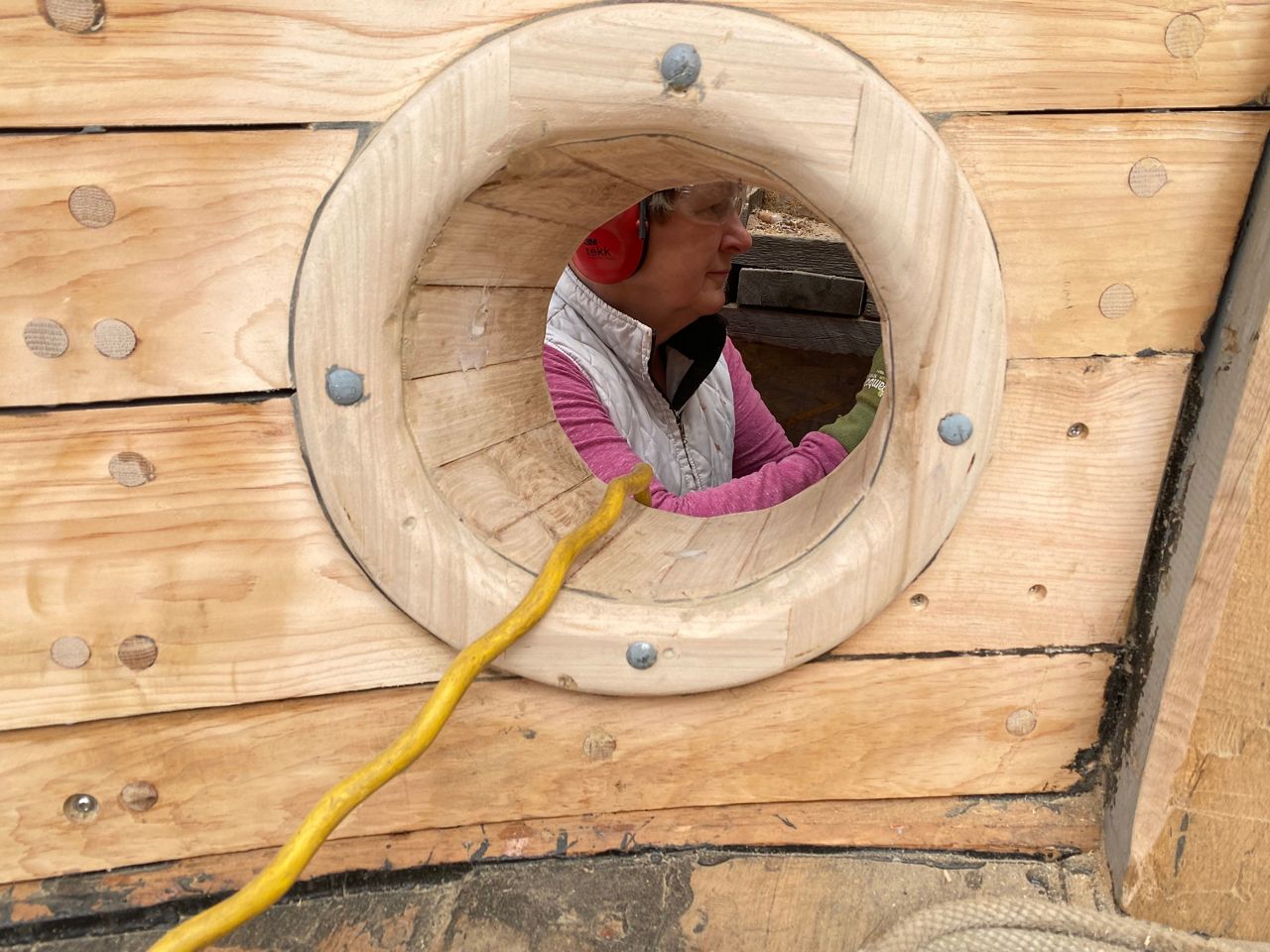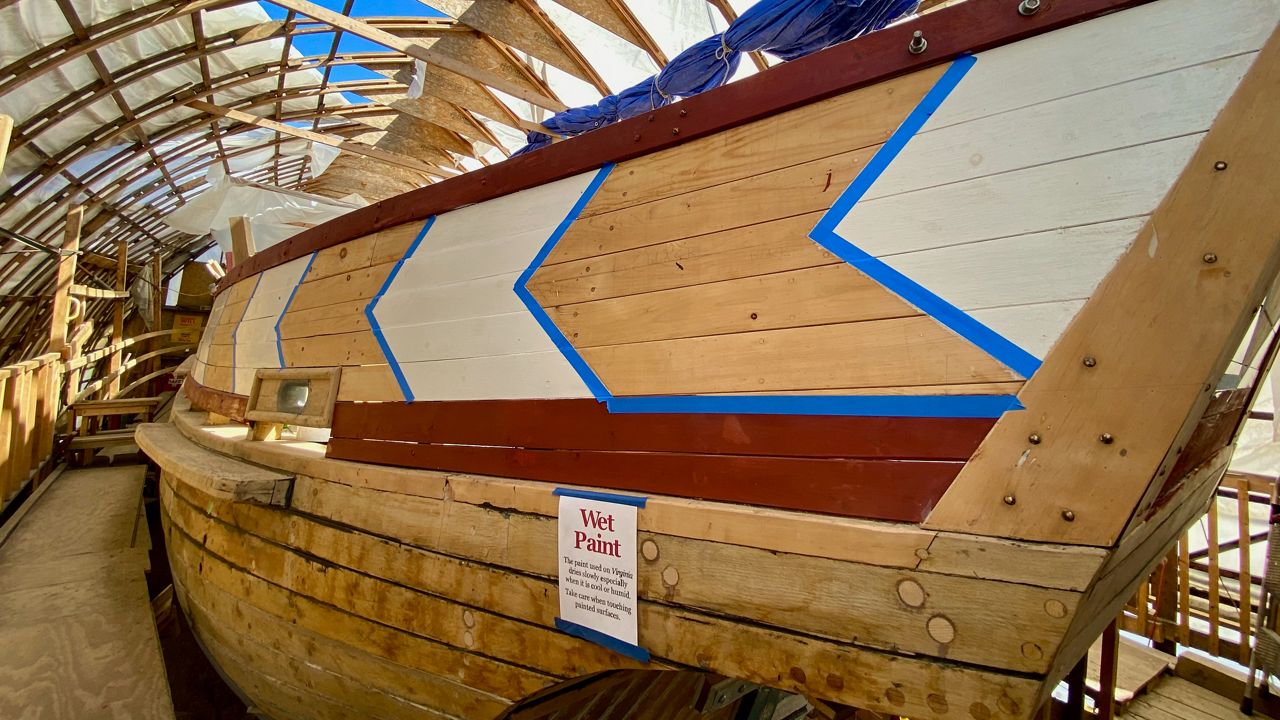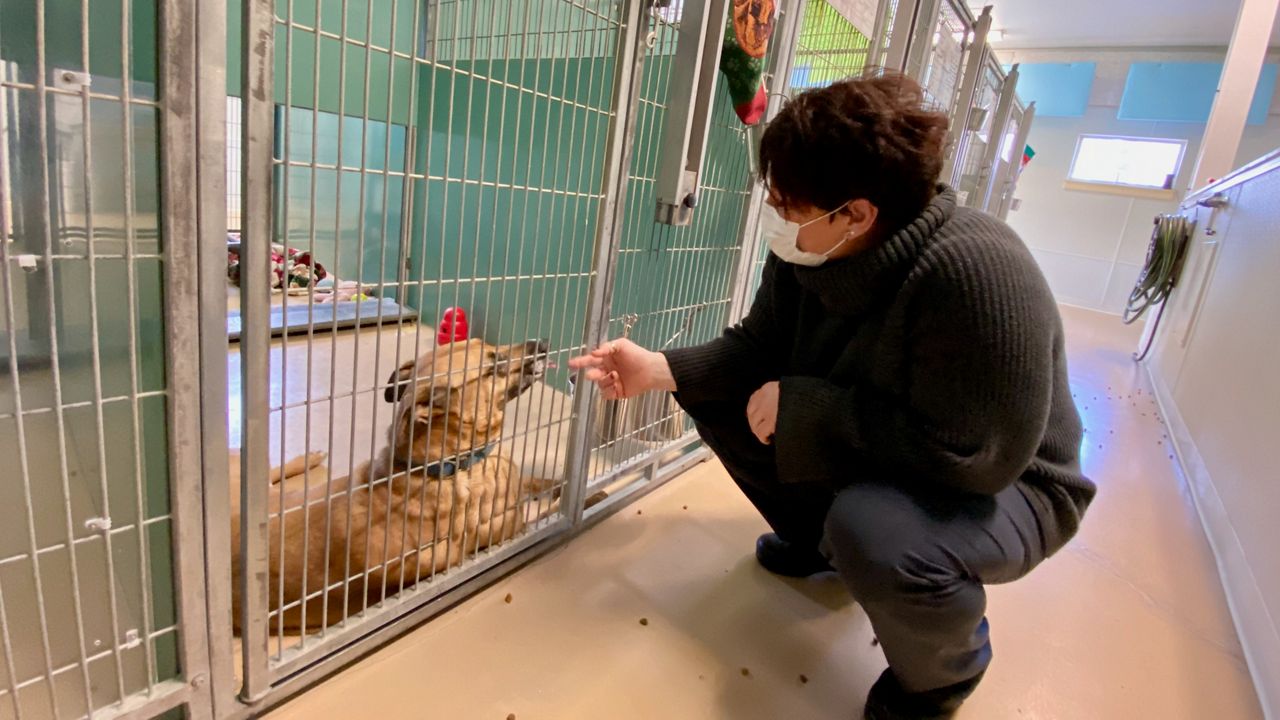More than a dozen volunteers buzzed around a Bath worksite Wednesday, sewing, painting, measuring and cutting.
A handwritten sign at the site that says “The End is Nigh!!” greets them as they begin their task for the day. In just three weeks, the passion project that’s been 11 years in the making will take a major step forward.
That’s when the Virginia, a replica of the first ship built in Maine in 1608, will launch into the Kennebec River. It’s the culmination of efforts that began in the late 1990s when archeologists discovered the Popham Colony, a group of European settlers who lived about 14 months in what is now Phippsburg. The group behind the effort to identify the colony wanted to find a way to keep the story alive.
“Someone said build a ship,” said Kirstie Truluck, executive director of Maine’s First Ship. “Because what the Popham Colony did was they built a ship. And it was the first English-constructed ocean-going vessel” built in the Americas.

The colony was founded in August 1607 by Europeans who traveled up from Jamestown to explore the “wood, animal and mineral wealth of the area and to find the northwest passage,” according to a history on the Maine’s First Ship website. While here, they built the Virginia at Fort St. George near the mouth of the Kennebec River.
At the time, the area was already home to a large population of Wabanaki, who had a “long tradition of building watercraft” in the area because it was the best mode of transportation.
When the Europeans abandoned the colony in October 1608, they sailed the Virginia back to England and it was later sold to the Jamestown Colony.
At 51-feet, the reconstructed Virginia is a little larger than the original, Truluck said, because they wanted to be able to safely accommodate about 25 schoolchildren, teachers and crew when the ship is ready to sail. But they’ve taken great pains to be as historically accurate as possible, using tools similar to those available to the colonists while employing more modern materials when necessary to ensure the ship lasts for decades.
They partnered with the Freight Shed Alliance along the river, laid the keel in 2011, and built a temporary shelter for the ship. The project is funded by donations and fueled by volunteers, many of whom are retired from professions unrelated to ship building or manual labor. Others bring their expertise as shipwrights, retired merchant marines with engineering backgrounds and a naval architect. Truluck estimates 200 volunteers have worked on the project.
“For some it’s a labor of love of history, for some it’s a love of craftsmanship, for some it’s a love of engineering, for many and really all, it’s a love of community,” Truluck said.
One of those volunteers, retired physician Dr. Dan Wood, who is helping to build the docking system, said he hopes the ship helps teach people about the Popham Colony.
“It keeps me busy,” he said. “It’s accomplishing something which is going to be important to Bath.”
On June 4, the community will celebrate the launching of the Virginia beginning at noon with the firing of the ship’s cannons. There will be a street fair, music that includes sea shanties, a Wabanaki birch bark canoe demonstration, food trucks and period re-enactors walking the streets.

The launch ceremony will be from 3:30 p.m. to 4:30 p.m., taking advantage of the high tide on the Kennebec.
And even though the ship will hit the water for the first time, there will be more work that needs to be done before it can host visitors, Truluck said. Throughout the summer and fall, they will finish the rigging and seek Coast Guard certification so in 2023 — if all goes according to plan — they will be able to take school groups and others out on the ship.
Board of Directors President Orman Hines, who got involved around the time of the archeological dig in 2000, said they were fortunate that so many talented volunteers came forward to help.
“it’s great to see it come to fruition,” he said. “It’s been a lot of fun. We’ve been lucky. We’ve had great volunteers.”






